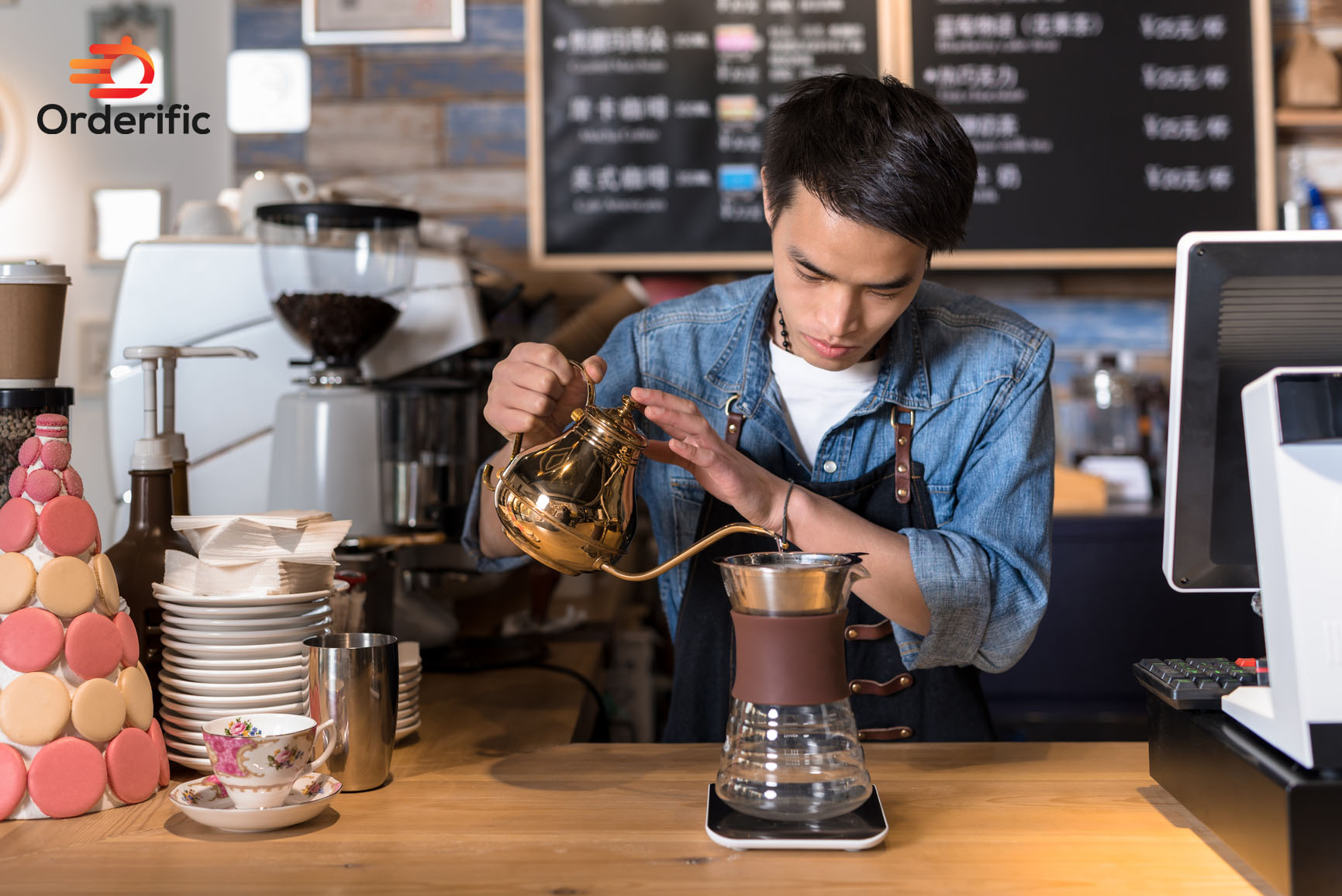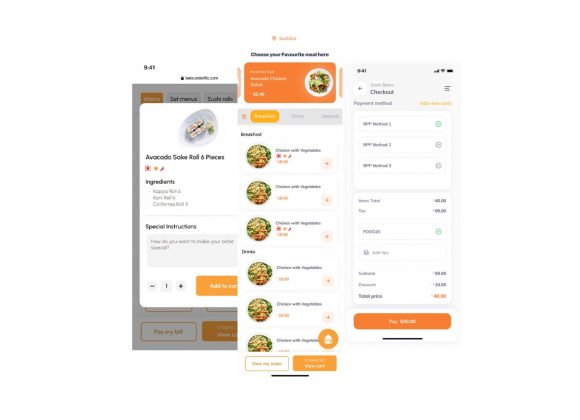
The food service industry is growing exponentially, and food trucks make up a major share of it, with an average growth of 13.7% over the last five years.
Starting a food truck business is an uber-cool way to prepare and sell food at different locations during different days of the week based on demand. Many entrepreneurs consider opening a food truck rather than starting a restaurant because it is more affordable.
Learn how to start a food truck business in below seven simple steps.
Step 1: Perform market research
Before opening a food truck at any particular location, investigate the number of food trucks, their serving hours, and the type of food they serve in that area. This analysis will help you gauge the competition and consumer demand before selecting the nature of the food truck.
Step 2: Prepare a business plan
An effective food truck business plan should include all information about your business. It should also describe unique selling propositions of your business that will help you stand out from the competition. A business plan can also help you attract investors while raising funds.
A research shows that a solid business plan can increase the chances of growth in sales by 30%. According to the Small Business Administration (SBA), your business plan should include the following sections:
- Executive Summary: It explains what your business does and the mission and vision of your business.
- Company Description: It provides further details about your business and why your customers will choose you over the competition.
- Market Analysis: It informs about the target audience, their needs and locations, and how you will attract them to your business.
- Organization and Management: This section explains your business’ legal structure (e.g., sole proprietor, LLC, partnership) and includes details about the management team.
- Product Description: It informs about your food menu and the services you wish to provide.
- Marketing and Sales: It outlines your marketing and sales strategies to build and maintain a customer base. It also informs about the minimum sales requirement to keep your food truck running.
- Funds Required: In this section, you calculate the cost of upfront expenses by the time your business starts generating revenue. It should also brief how you’ll use your funds to grow your business.
- Financial Projections: This section includes forecasted statements and financial projections.
- Appendix: In this section, you can include all supporting documents, like licenses or permits secured to run a food truck business.
Step 3: Identify sources of funding
To calculate the funds required to open and run a food truck, sum up all the initial one-time and recurring costs. The regular expenses will include payroll, insurance, equipment rental, credit card processing and fuel. The upfront expenses will include
- Purchasing a food truck and a point-of-sale (POS) system
- Paying for permits and licenses
- Initial product inventory costs
- Any professional or legal consulting fees
Once you determine how much funds you need, identify potential funding sources for your food truck business. You can apply for a secured vehicle loan, an unsecured loan, or a line of credit.
A solid business plan, a business account, and an excellent personal and business credit score can increase your chances of receiving a business loan.
Step 4: Fulfill legal requirements
To legally operate a food truck in any region, you must have related food service permits and safety and parking licenses. You must also obtain a commercial driving license based on that region and the size of your vehicle.
You should fulfill all regulations in the areas where you are planning to run your food truck business. Also, check all driving and parking rules in those locations to prevent fines.
Step 5: Finalize the food truck
Explore, take demos and compare rates of different food truck models before purchasing. Select a food truck that meets all your space, cost and storage needs. Ensure that your food truck fulfills all required standards and is customizable to the kind of food you plan to sell.
After buying the required truck, determine what cooking and refrigeration equipment you need for serving and storing food. You can purchase the cooking equipment separately or get these assembled from the dealer.
You may get a food truck on lease or purchase it from a company specializing in food trucks and providing good after-sales services. But before hitting the road, ensure that everything is working right and your food truck has adequate water supply and inventory items.
Step 6: Offer a unique, differentiated menu
A study shows over 34% of food truck chefs like to experiment with their menus. Pick out the dishes you want to serve on the food menu according to customer preferences and market demands. You can also standardize the recipes to ensure consistency and quality.
Step 7: Start marketing and advertising
The last step is to promote your food truck business and create a social media presence. A study revealed that 64% of small businesses use social media in their marketing strategy.
Devise an effective advertising and marketing plan, and promote your USPs over the truck design. Offer some discounts or coupons to attract new and loyal customers.
How to manage your food truck digitally

Once you set up your food truck business, you can completely manage it digitally by implementing the following strategies.
Design QR code – Your customers can order online by accessing the digital menu by scanning QR codes. A study shows that 92% of restaurants have used QR codes after the pandemic for a contactless dining experience.
The QR mobile ordering solution helps you to achieve faster order fulfillment by avoiding queues and handling rush hour service.
Build a website – You can create a website for your brand using a wide range of templates available online (or at Orderific). These templates are highly customizable and can be modified to cater to your business needs.
Run promotions – You can promote offers on your website, digital menu, or payment page, which can help you attract more customers to your food truck.
Create a loyalty system – You can create a loyalty program based on the number of orders, and points earned per order, or offer complimentary drinks for repeat customers. A report estimates that the loyalty management market will increase by $24.44 billion by 2029.
Customize menu – You can curate your digital menu with vibrant pictures, ingredient lists, calorie value and AI-suggested combos. You can also let your customers customize their dishes by selecting or avoiding some ingredients.
Automate inventory tracking – Use automation to keep track of real-time orders, kitchen inventory and invoices for kitchen purchases. Thus, when you prepare a dish, amount of ingredients used will automatically be deducted from the stock.
Access accurate insights – Implement a comprehensive dashboard to get detailed reports to determine the bestsellers on your menu and most ordered dishes, combos or drinks.
Benefits of using Orderific
Orderific can help you increase your profit margins and enhance the customer experience in today’s rapidly-evolving business environment. Here we’ve listed a few benefits of Orderific for your perusal.
More accurate order placement: Since the order is placed through a digital menu and updated instantly to the KOT (kitchen order ticket), Orderific avoids human errors and delays.
Faster service: By accepting online orders and payments through Orderific, you can save a lot of time spent placing orders and final billing.
Increased upsell opportunity: When a customer adds a dish to the cart, Orderific automatically suggests food combinations and offers that can go well with the order. Thus, it increases upsell opportunities.
Easy billing: With Orderific, you can generate invoices for kitchen purchases to keep track of stock. It also provides integrated payment gateways with zero transaction fees to accept payments through multiple channels, including cryptocurrency.
Less food wastage: Orderific AI-enabled system tracks which dish gets ordered most on which day. Thus, you can also use Orderific to plan inventory and food preparation.
Fast set up: Orderific is easy to set up and work with as it is a web-based service and does not require heavy software downloads.
Increased customer satisfaction: Error-free order placement and hassle-free payment can keep your customers happy and satisfied.
You can connect with our team to discuss the benefits in detail.
FAQs
How much money do you think it takes to start a profitable food truck?
The initial investment for a profitable food truck can vary, but it often ranges from $20,000 to $100,000, depending on location and equipment.
What are 3 start up expenses for a food truck business?
Three startup expenses for a food truck business include the cost of the truck itself, kitchen equipment, and initial inventory.
What is the first step to a successful food truck business?
The first step to a successful food truck business is to create a detailed business plan that outlines your concept, budget, and target market.
What is the business life cycle for food truck business?
The business life cycle for a food truck can vary, but it typically involves stages like startup, growth, maturity, and potentially expansion or diversification.












